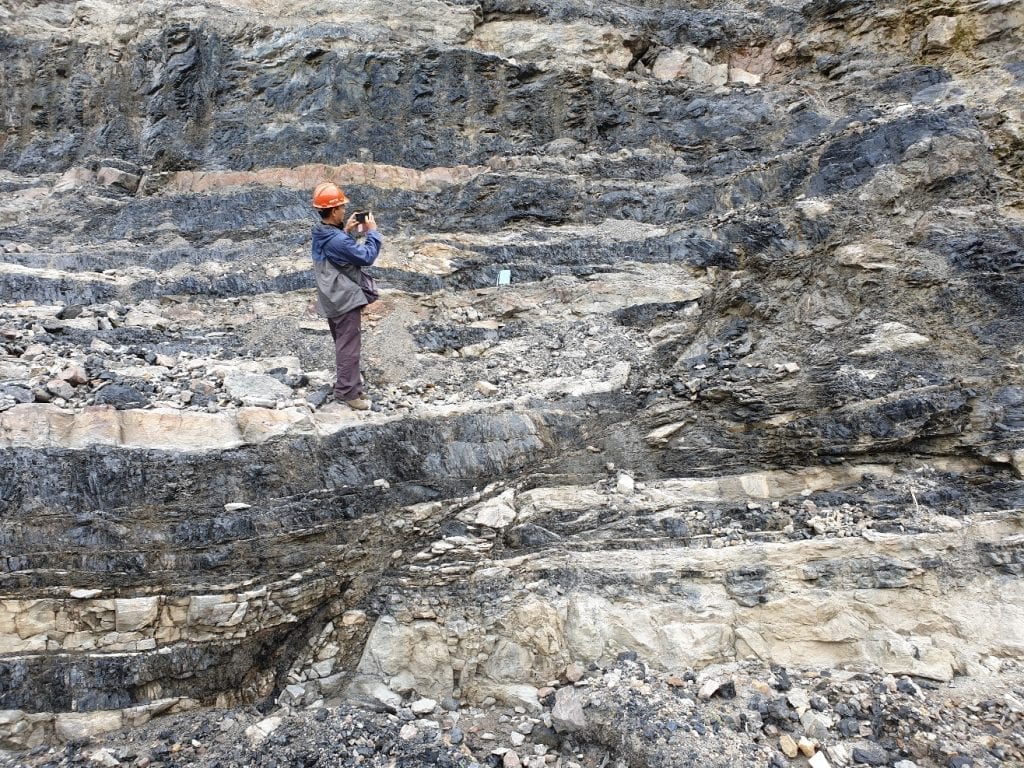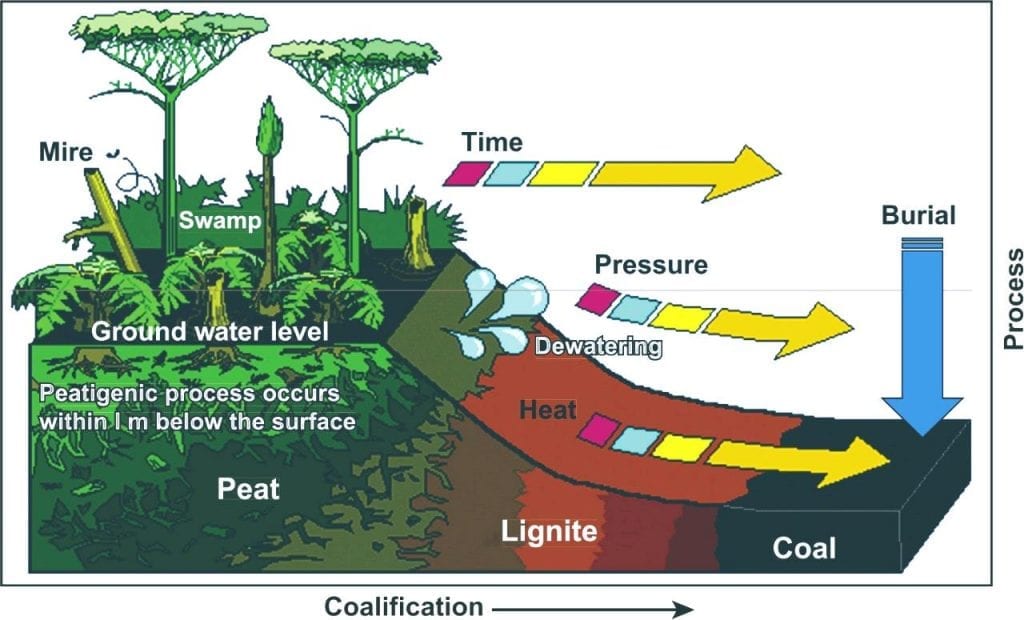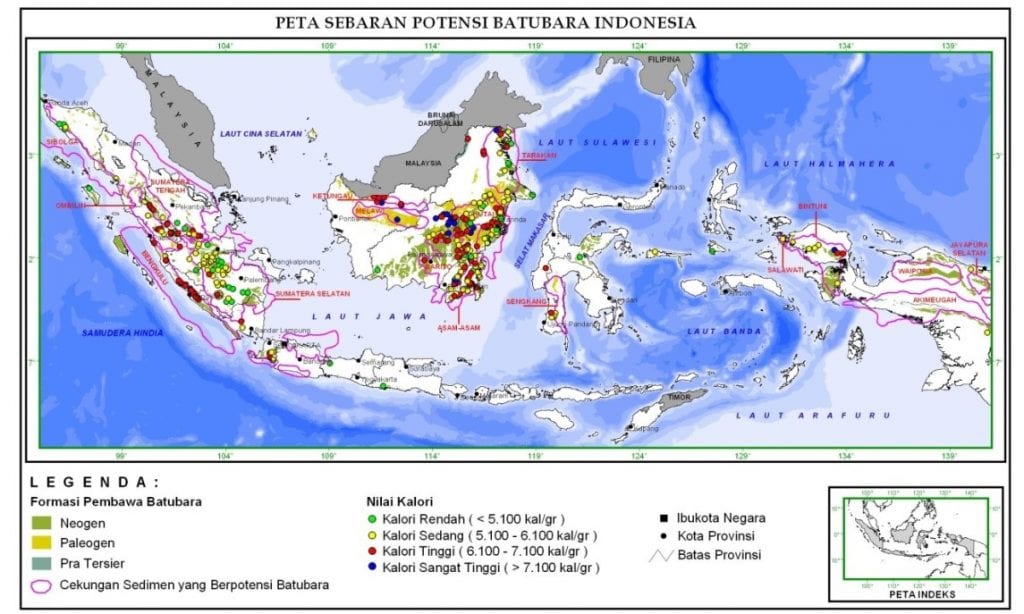Coal, si hitam manis often referred to as black gold

Coal outcrop in Ombilin, West Sumatra (Source: documentation of F. Anggara)
When we talk about coal, indeed, it is a valuable resource for Indonesia and cannot be separated from our everyday life. We can enjoy electricity at home, in the office or in shops, it is because of the coal si hitam manis, which is referred to as black gold. This article is expected to broaden our horizon on coal.
What are the uses of coal?
Coal is one of the most important source of energy for the world, it is used as fuel for almost 40% of power generation world-widely (Anonymous, 2005). Coal has played a very important role for centuries, not only generating electricity, but also as a major fuel for steel production, cement, alumina processing centers, paper mills, chemical industries, and pharmaceuticals. In addition, there are also coal byproducts, including soap, aspirin, solvents, dyes, plastics, and fiber (Anonymous, 2005). Are you surprised by how useful this black material is? Now you will definitely be interested in getting to know coal for more.
What is coal and how is coal formation?
Coal is the accumulation of the remnant of plants that die and do not have time to decompose perfectly, which is then well preserved under no oxygen (anaerobic) condition, for example at the bottom of a lake or in fine-grained sediments. The hoarding process coincides with the shifting of the earth’s crust (known as tectonic shift) which allows plants remains to accumulate very deep. As a result of the hoarding process, plant material is exposed to high temperature and pressure which cause physical and chemical changes. During this stage, the percentage of hydrogen and oxygen will decrease, while the percentage of carbon will increase. The end result is a material containing more than 50% carbon by weight and 70% by volume, which we call coal (Figure 1).

What are the types of coal?
Coal has different characteristics and types. Factors that determine the character of coal include the types of constituent plants and impurities present in the coal, which will affect the ash content in the coal. Aside from that, temperature, pressure, and the time of formation are important factors in the formation of coal, which is called organic maturity. The initial stage in the formation of coal begins with the change in plant material into peat, which then turns into lignite. As temperature and pressure increase, lignite changes gradually to sub-bituminous coal, then bituminous, and as the highest rank becomes anthracite. Higher rank (anthracite) coals are generally harder, have more carbon content, lower humidity level, and produce more energy.
Coal as an energy source in Indonesia
Indonesia’s energy demand is dominated by electricity consumption and is expected to increase due to the economic development and fast-growing population. In order to balance this energy demand, the Indonesian government has set targets for power generation up to 135.5 GW by 2025, and is set forth in Presidential Regulation (PerPres) No.22 / 2017. Primary energy supply in Indonesia is mainly based on fossil fuels such as oil, gas and coal. National energy policy sets the proportion of energy sources in 2025, namely oil (20%), gas (30%), coal (33%), and renewable energy (17%). The power generation sector is the largest coal consumer in Indonesia. The increase in coal consumption is very significant in the power generation sector, from 56 million tons in 2006 and estimated to be 123.2 tons in 2025. While Indonesia itself has coal resources (Figure 2) of 149.009 billion tons and reserves of 37.604 billion tons (data Badan Geologi in 2018).

Considering that coal has a non-renewable nature and is produced from geological processes for tens or even hundreds of millions of years, it is very unfortunate if its utilization has no added value. In addition, burning coal for power generation purposes also produces “hazardous and toxic solid waste”. Development and research must be carried out related to the use of coal and the utilization of coal waste, including coal bed methane, liquified coal, gasified coal, or the use of coal “waste” to produce unconventional resources that increase the efficiency and value of coal usage in Indonesia (also read article: Coal Combustion Solid Waste: the Potential of Future Unconventional Resources in Indonesia?).
Source:
- Anonim, 2005. Sumber Daya Batubara: Tinjauan Lengkap Mengenai Batubara, World Coal Institute https://www.worldcoal.org/file_validate.php?file=coal_resource_indonesian.pdf
- Anonim, 2015. Rencana Strategis Badan Geologi 2015-2019, Badan Geologi KESDM, Jakarta. 275 p.
- Flores, R., 2014. Coal and Coalbed Gas st Edition Fueling the Future. Elsevier Science. 720 p.
- Diessel, C.F.K., 1992. Coal-Bearing Depositional Systems, Springer Berlin Heidelberg, Berlin, Heidelberg. 721 p.
- Suprapto, S., 2014. Karakteristik dan Pemanfaatan Batubara: Solusi dalam Keberlimpahan Batubara di Indonesia, Jakarta, Badan Litbang ESDM. 105 p.
